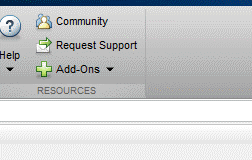LEGO MINDSTORMS EV3 Support from Simulink
Run models on LEGO MINDSTORMS EV3
- LEGO MINDSTORMS EV3 Support from Simulink
- LEGO MINDSTORMS EV3 Support from MATLAB
Capabilities and Features
Simulink Support Package for LEGO® MINDSTORMS® EV3 Hardware lets you program and run algorithms on LEGO MINDSTORMS EV3 robots. The support package includes a library of Simulink blocks for configuring and accessing the robot’s sensors, actuators, and communication interfaces.
You can develop algorithms in Simulink, simulate them to verify that they work as intended, and download the completed algorithm for standalone execution on the device (via USB, Bluetooth, Wi-Fi, or Ethernet connection). You also have the ability to tune parameters live from your Simulink model while the algorithm runs on the EV3 brick.
The support package includes:
- Library of Simulink blocks that connect to LEGO MINDSTORMS EV3 I/O, including buttons and speakers; numerous input sensors including color, touch, gyro, ultrasonic, infrared, and encoder; and output sensors such as servo motor, status light, and display
- Support for LEGO MINDSTORMS NXT sensors on LEGO MINDSTORMS EV3 Bricks, including ultrasonic, touch, sound, battery, timer, and gyroscope
- Interactive parameter tuning of outputs and signal monitoring of sensor inputs for applications running on LEGO MINDSTORMS EV3
- UDP and TCP/IP blocks to let your LEGO MINDSTORMS EV3 communicate with Arduino, Raspberry Pi™, and mobile devices (Android)
- Model deployment for standalone operation
Learn more about Arduino programming with MATLAB and Simulink.
Watch video to learn how to implement serial communication between Raspberry Pi and Arduino.
About LEGO MINDSTORMS EV3
LEGO MINDSTORMS EV3 is based on a brick that includes an ARM®9-based processor, micro SD card reader, and USB port for Wi-Fi connectivity. It connects to a variety of sensors, such as ultrasound, color/light, gyroscope, and touch. It also connects to up to four servo motors that enable to build mobile robots. It can be programmed to do tasks such as line following and object detection and avoidance.
Platform and Release Support
See the hardware support package system requirements table for current and prior version, release, and platform availability.
View enhancements and bug fixes in release notes.

